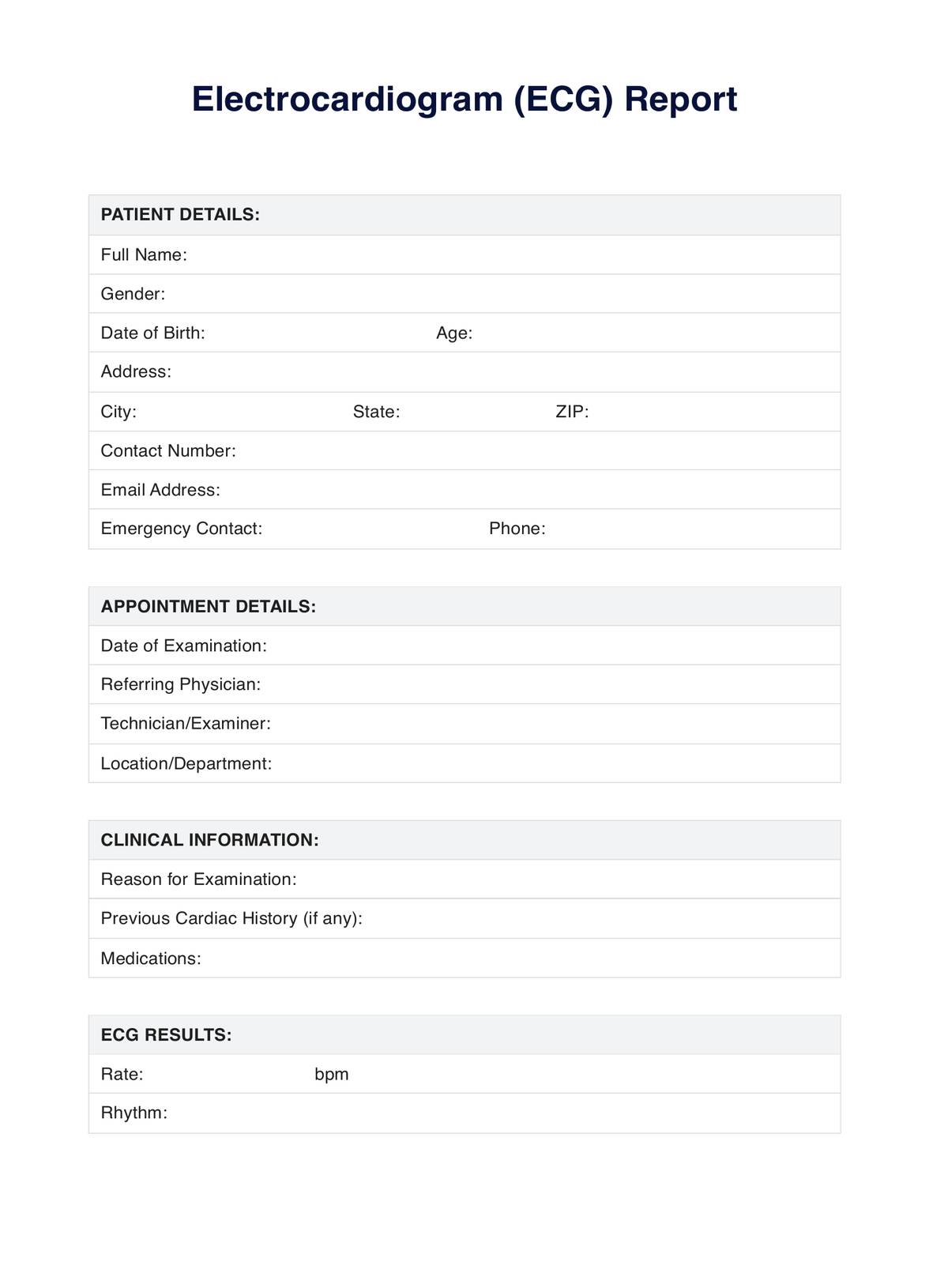Doctors typically request an ECG when they suspect heart disease or monitor patients' health with existing heart conditions.

Electrocardiogram
Understand your heart's health with an Electrocardiogram Test. This quick, painless procedure evaluates heart rhythm and detects potential heart conditions.
Use Template
Electrocardiogram Template
Commonly asked questions
ECGs are used in routine health exams, when symptoms suggest heart problems, or before surgeries to assess the heart's condition.
The test is used to measure the rate and regularity of heartbeats, the size and position of the heart chambers, and any damage to the heart.
EHR and practice management software
Get started for free
*No credit card required
Free
$0/usd
Unlimited clients
Telehealth
1GB of storage
Client portal text
Automated billing and online payments











